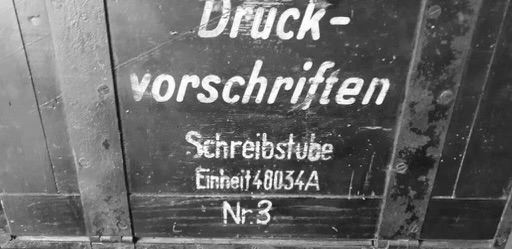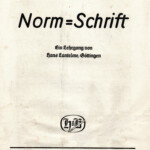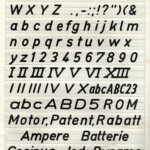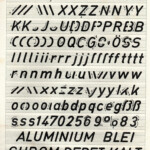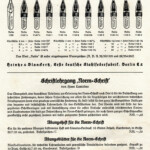Last updated on May 14, 2023
“Normschrift” was a type of writing that originated early in the 20th century in Germany. It was intended as a standardized script used for technical writing. By the 1930s it was in widespread use in Germany, used for many purposes. This circa 1930s instructional booklet by pen manufacturer Heintze & Blancketz shows how Normschrift was to be written.
Here is a printable PDF of these pages.
The above booklet suggests using the “Redis” brand dip pen nibs from Heintze & Blanckertz for this writing. The reason for this is that Redis nibs create writing with no line variation, which is a characteristic of Normschrift. Whichever direction you draw a line in with these nibs, the width is the same. Here are some pre-1945 Redis nibs. During the war the factory in Berlin was destroyed, after the war production resumed in Frankfurt am Main.
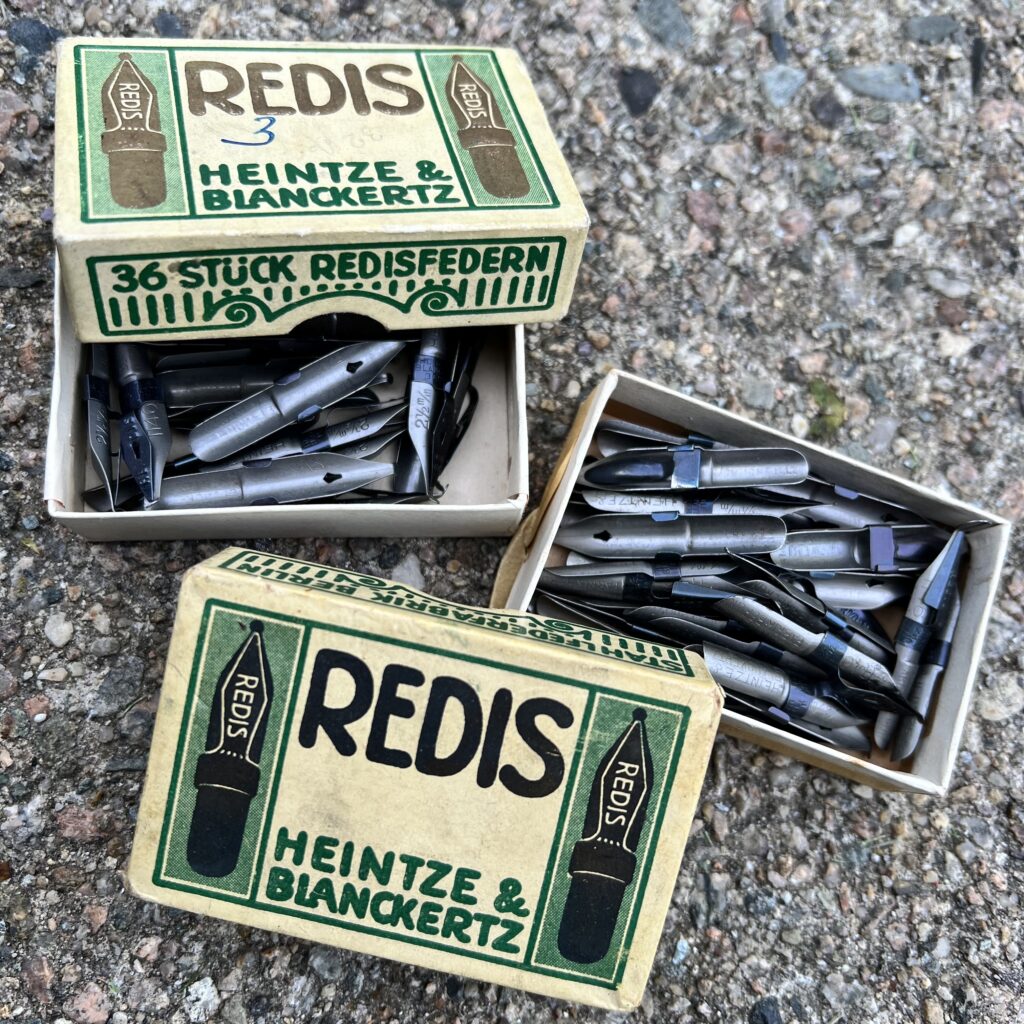
The writing on the cover of this book is done in a stylized Normschrift and may have been done with a dip pen nib like those shown above.
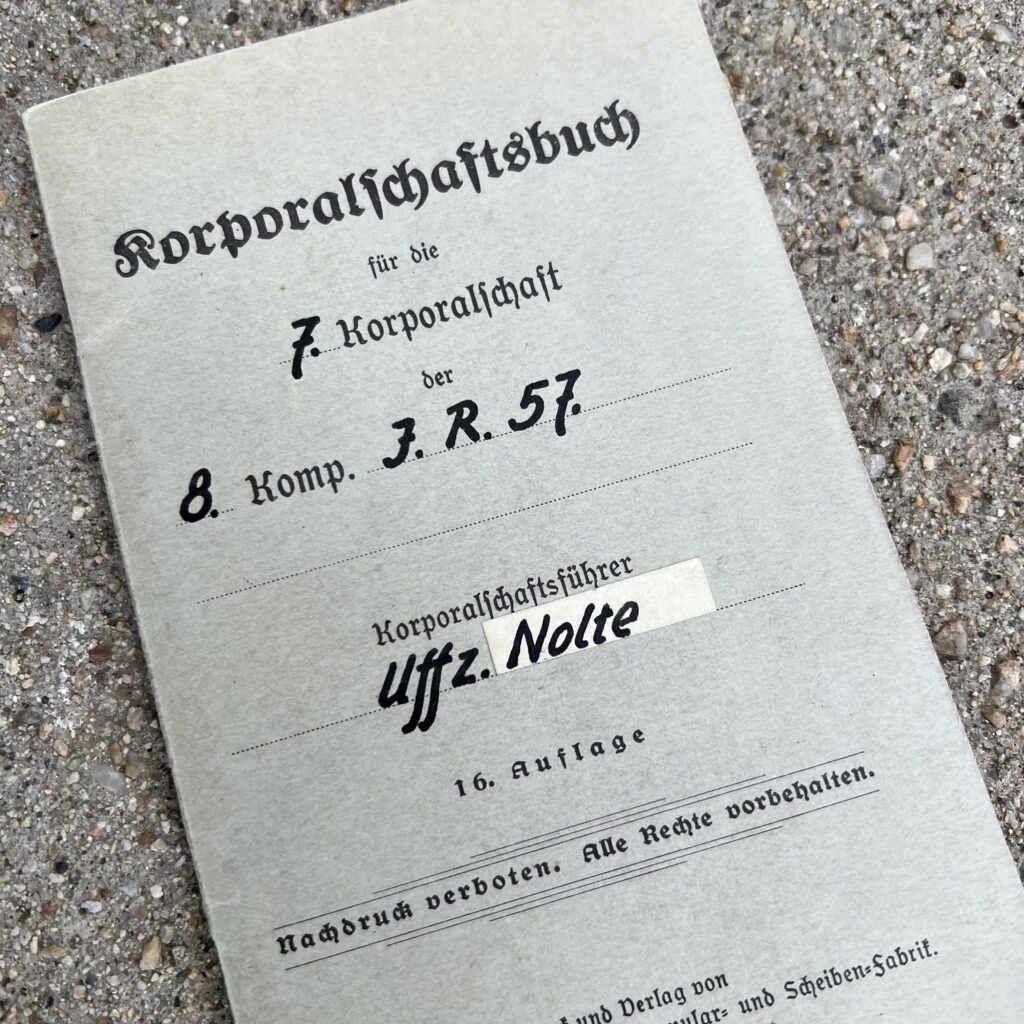
This Soldbuch entry uses a print handwriting script similar to Normschrift.

Normschrift could be written with tools other than pens, too. Because Normschrift was used in many situations that required easily legible script, it was often written large and painted, either using a stencil or freehand with a brush. In the Wehrmacht this script was often used for signage, for labeling, and on crates. For example, some makers used this script for the label on the “Verbandkasten” first aid kit carried in Wehrmacht vehicles. This script is very useful in a Schreibstube, for signs and labels as well as for paperwork.
